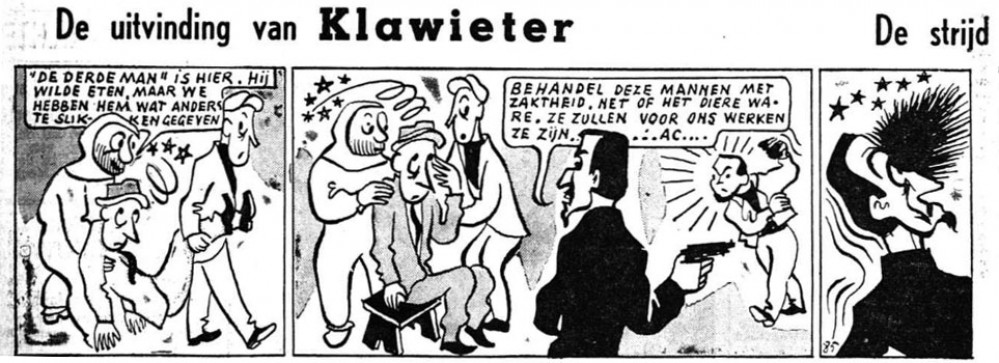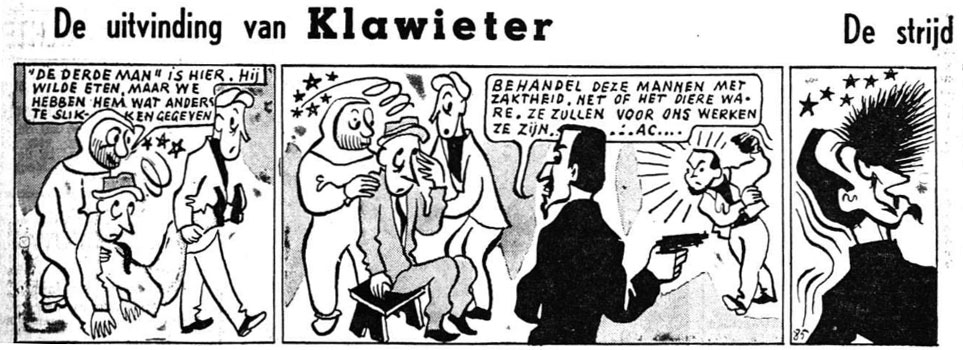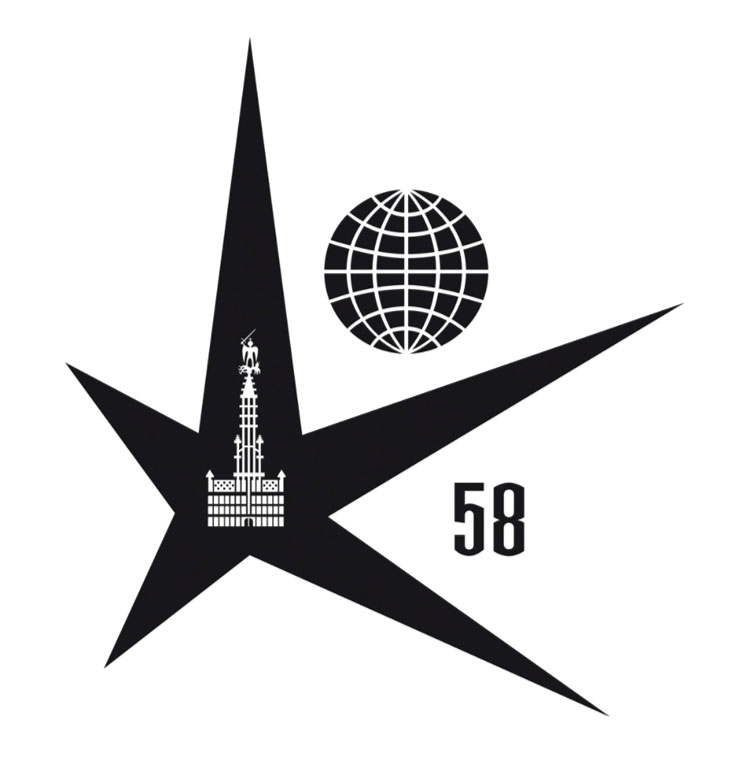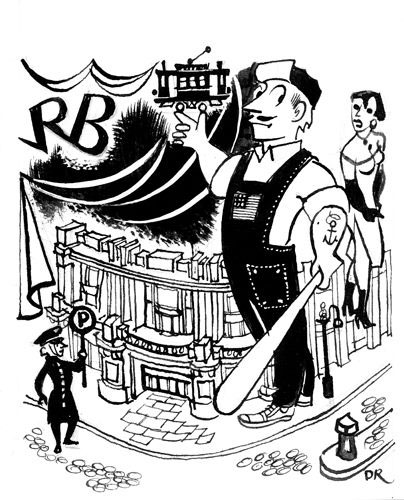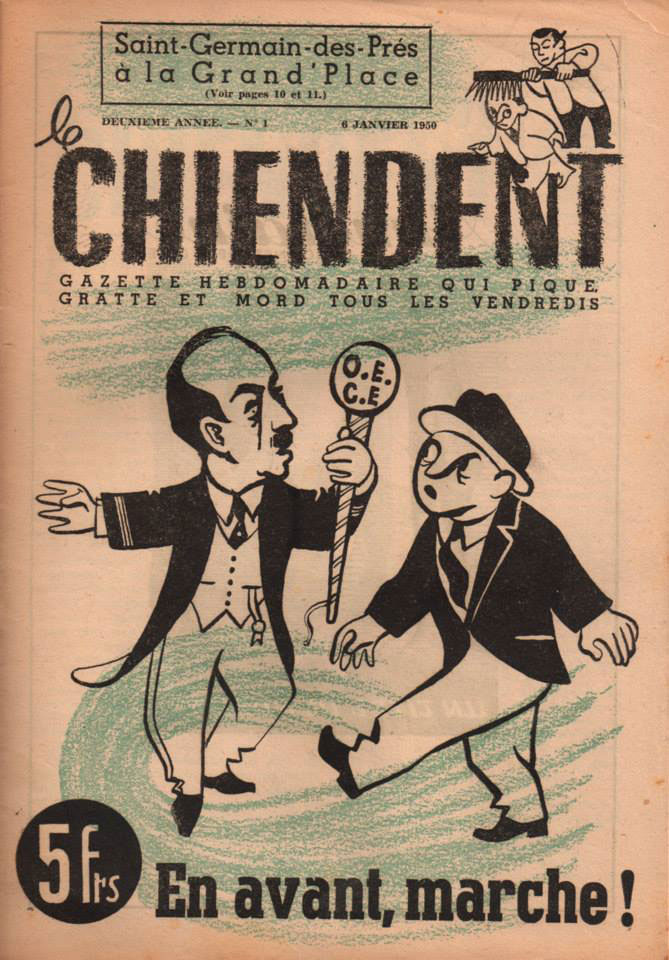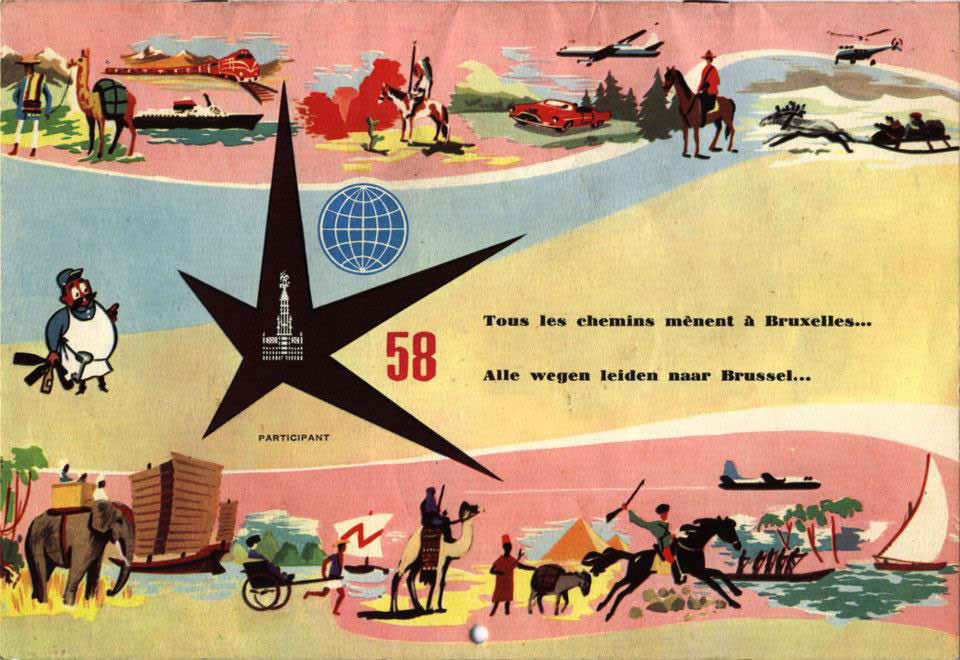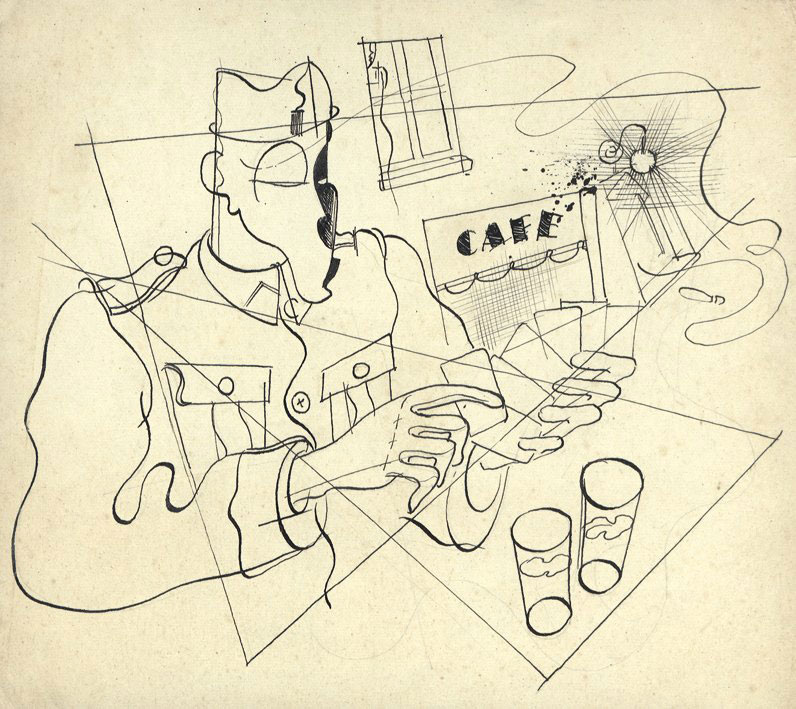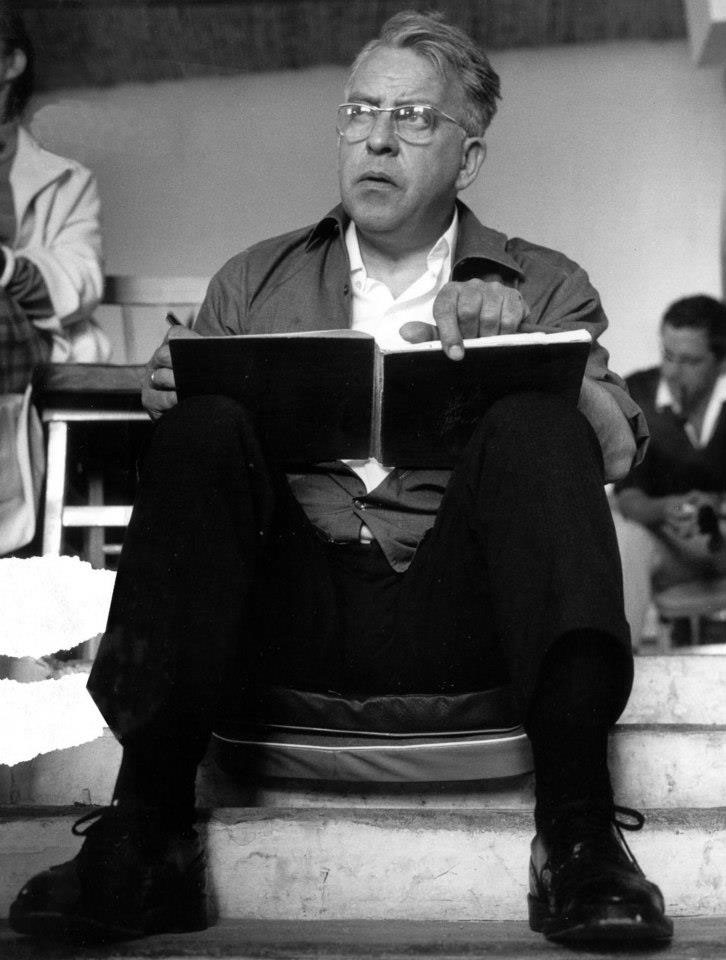'De Strijd Om Het Uranium' (23 May 1950).
Lucien De Roeck was a Belgian graphic designer, painter, illustrator and comic artist. Nowadays, he is best remembered for designing the logo for the 1958 World Exhibition in Brussels, often shortened to "Expo 58". Earlier in his career, he drew the one-shot humorous adventure comic 'De Strijd Om Het Uranium' (1950), also known as 'Klawieter', serialized in the newspaper Het Nieuws van den Dag.
Lucien De Roeck's Expo 58 logo.
Early life and career
Lucien De Roeck was born in 1915 in Dendermonde in the province of East Flanders, though some sources also claim he was born in the Dutch city Breda. At age five, his family moved to Elsene, near the Belgian capital Brussels. From a young age, De Roeck loved drawing. Between 1932 and 1935, he studied at the La Cambre School of Visual Arts in Brussels, where he was educated by famous architect Henry Van de Velde, while his typography teacher was sculptor Joris Minne. In 1935, still during his student years, De Roeck won a contest organized by Antwerp mayor Camille Huysmans to design a promotional poster for the city. A year later, he also won a contest with the ferry between Ostend and Dover as subject.
In 1939, De Roeck started a course in calligraphy at the London Royal College of Art. However, in September of that year, the United Kingdom declared war on Germany. The expat student was forced to drop out and return to his home country. When the Nazis invaded Belgium in May 1940, De Roeck was drafted. He fought near the river Leie (Lys) in the province of West Flanders, where he was taken prisoner. After spending several months in a German POW camp, he was allowed to return home by the end of the year. Since Belgium was now occupied by the Nazis, De Roeck made a living as a house painter.
In 1941, De Roeck was sued by the French painter and typographer A. M. Cassandre for using his Peignot typeface on a poster promoting an international dance contest. The experience convinced him to start an additional course in typography at his old academy. Between 1958 and 1980, De Roeck worked as an art teacher. He taught typography at La Cambre in Brussels and additionally gave drawing lessons at the St. Lucas Pavilion (Karel de Grote-Hogeschool) in Antwerp, the provincial college in Saint-Ghislain and Brussels evening schools. Among the famous artists he educated were Pierre Alechinsky, Jean-Michel Folon and Michel Olyff. De Roeck was also part of the staff of the Book Museum in Brussels and a member of the typography society ATypyl.
Cartoon for Pan magazine and cover art for the 6 January 1950 issue of Le Chiendent. The mustached man on the latter cover is politician Paul van Zeeland.
Graphic career
De Roeck provided illustrations for magazines and newspapers like Le Chiendent, Le Journal des Beaux-Arts, La Lanterne, Le Quotidien, La Lanterne, La Cité and Le Phare, while livening up the theater column in the magazine Pan. In 1959, he crafted a mobile panoramic sight of Brussels, at the commission of the Commissariat of Tourism. De Roeck also designed title cards for the Walloon public TV channel INR (nowadays the RTBF).
Klawieter
In 1950, De Roeck worked for the Flemish newspaper Het Nieuws Van Den Dag. Two years earlier, in June 1948, the publication had acquired another paper, 't Vrije Volksblad from its previous owner, De Nieuwe Gids. This ensured that Het Nieuws van den Dag could now also serialize the popular newspaper comic 'De Avonturen van Detektief Van Zwam' by Marc Sleen, which had been running in De Nieuwe Gids and 't Vrije Volksblad since 1 October 1947. However, in 1950, Sleen left the paper to join another newspaper, Het Volk, taking his hit series (now renamed 'Nero') with him.
'De Strijd Om Het Uranium' (12 May 1950).
The editors of Het Nieuws Van Den Dag quickly searched for a replacement comic. They found two artists willing to create a humorous adventure series, Lucien De Roeck and Raf Van Dijck. Under the pen name Luc Droek, De Roeck created the one-shot comic serial 'De Strijd Om Het Uranium' (1950), scripted by former Marc Sleen collaborator Gaston Durnez. Serialized in Het Nieuws Van Den Dag from 23 March until 8 June 1950, 'De Strijd Om Het Uranium' stars the absent-minded professor Klawieter and his friends, who travel to the Belgian colony Congo to find uranium. The story makes some nods to then-current political issues, like the Royal Question crisis which divided post-war Belgium. As can be expected from a Catholic newspaper from that era, it also features a lot of jokes at the expense of all other Belgian political parties. Neither Van Dijck's comic 'Kwik en Filidoor' nor De Roeck's 'Klawieter' really caught on with readers. Both artists were therefore replaced by the newspaper for the more experienced comic artist Bob de Moor, who drew the satirical political series 'De Nieuwe Avonturen van Tijl Uilenspiegel' (1950-1951), followed by his more apolitical humorous adventure comic 'De Avonturen van Nonkel Zigomar, Snoe en Snolleke' (1951-1956).
Lucien De Roeck is believed to have drawn a comic titled 'Gibou', influenced by Jijé. It is however unknown if this strip was either finished or published. During the 1950s, he also worked on the game and contest pages in Tintin magazine. Other than these series he didn't create any other comics.
Expo 58
In 1954, Belgium was preparing itself for the upcoming World Exhibition in Brussels, four years later. A contest was held to design an official logo. Given his success with previous design competitions, De Roeck participated and won once again. During the World Exhibition in Brussels (1958), his logo was used in all advertisements and merchandising. His design represented an asymmetrical star, with a globe in the upper right corner. Within the star, the Brussels City Hall is shown, while the five points symbolize the five continents. The star was slightly based on an 80 meter long and pointy sculpture at the exhibition named "The Arrow", or "The Pavilion of Civil Technique" (designed by Jean Van Doosselaere, André Paduart and Jacques Moeschal). Apart from the logo, De Roeck also designed various posters, maps and other memorabilia for Expo 58. Three-dimensional luminescent versions of his star logo decorated a footbridge with a view over several pavilions.
Recognition
In 1960 and 1966, De Roeck was knighted, respectively, in the Order of Leopold II and Leopold I.
Death and legacy
Lucien De Roeck played the character Mr. Hubert in the short film 'La Mer Amour' (1986) by Isabelle Willemsin. De Roeck died in 2002, at age 86. The foundation Fonds Lucien De Roeck has been archiving his work and keeping it in public memory. For people interested in his work, the books 'Lucien De Roeck' (Borgerhoff & Lamberigts, 2008), 'Lucien De Roeck: Tournai, Dessins à la Plume et Croquis de Paysage 1987-1988' (Maison de la Culture de Tournai, 2011) and 'Lucien De Roeck: De l'Affiche à la Lettre - Van Affiche tot Letter' (Racine, 2015) are highly recommended.


